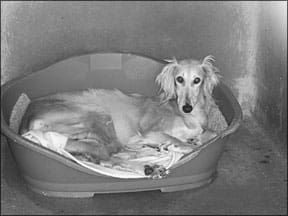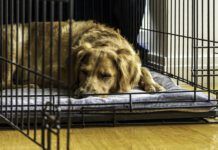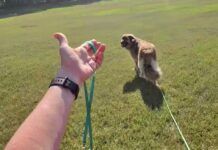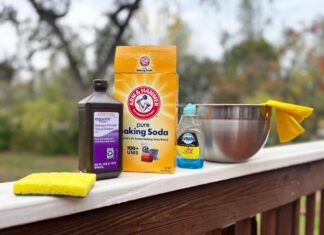Just a few days ago, my husband, Paul, and I were strolling Darling Harbour in Sydney, Australia, hand in hand. I had been offered a once-in-a-lifetime opportunity to be the main speaker at the annual conference of the Australia APDT (Association of Pet Dog Trainers), expenses paid! Of course, we couldn’t pass up the chance to make it a family vacation and explore some of the exquisite country.

288
I’m a strong proponent of positive training; Paul is executive director for the Humane Society of Washington County, in Hagerstown, Maryland. As eager as we were to explore Australia, we were just as interested in finding out more about the state of the dog care and training professions in a country whose animal ethic includes a ban on shock collars. We weren’t disappointed.
Flat collars everywhere!
Our first glimpse of Australian canines came immediately upon our arrival at Sydney International Airport, as a detection dog a Beagle happily worked the baggage claim area at the end of his handler’s leash, on a flat collar. Nice!
A short time later, as we were converting U.S. dollars to Australian ($.76 U.S. = $1.00 AU), an equally happy yellow Labrador Retriever detection dog wandered past. I was a bit concerned they’d be attracted to our luggage given the multitude of doggie smells our bags must carry, but, as they say in Oz, “No worries!” The dogs clearly knew what they were looking for, and it wasn’t “Essence of Canine.”
The 20-minute trip to our hotel precluded any dog- scouting, as Paul was busy learning how to drive on the left side of the road on motorways markedly narrower than ours, while I was having multiple coronaries at his near misses as he hugged the left side of the road. My gentle, “You’re a little close on this side,” quickly deteriorated to a shouted, “Watch that truck mirror!” as my adrenaline and cortisol levels rocketed up from the stress. We miraculously arrived unscathed at the Crest Hotel in King’s Crossing, only to face a new concern.

288
I had somewhat blindly selected the hotel over the Internet, trusting that 3.5 stars would be more than adequate, and seizing on a “hot deal” with reduced prices. Since the APDT was paying my conference-related expenses, but of course not any of Paul’s nor our add-on vacation, we were looking for opportunities to economize.
When we drove up the street past our chosen accommodation, we realized that King’s Crossing was located in a somewhat “Bohemian” part of town, as tour guides politely described it. The street walkers out on the sidewalk at 8 am were a giveaway, as were the numerous “girlie shows” with hawkers already inviting passers-by to come have a look. We checked into the hotel, and then quickly hopped back into our rental car to get our bearings.
Sydney is enormous, with an astounding four million inhabitants. We ran for the suburbs, tripped over our first national park (Georges River NP) where we gawked at sulphur crested cockatoos and snapped numerous photos only to later discover they’re as common as pigeons here and considered a nuisance, as they rip off roofing and pull rubber insulating strips out of car doors.

288
We also found our first Australian companion dogs. Lots of poodles, tons of Cavalier King Charles Spaniels (the breed we saw most frequently in the cities), a Golden Retriever, a couple of small Poodle-Terrier mixes, numerous Pits and Pit mixes (excuse me, American Staffordshire Terriers Pits are restricted in New South Wales), Boxers (with beautiful long ears and tails, by the way, as cropping and docking are also now banned there) . . . and our first Australian Kelpie. We have a Kelpie ourselves, Katie, so were particularly interested in finding them in their “native habitat.”
I caught a glimpse of the dog out of the corner of my eye and my brain leapt to “German Shepherd mix.” It was a black-and-tan (we have a red) and longer-legged than ours as were several of the Kelpies we saw there. But on second look I yelled “Kelpie!” We pulled over and asked the gentleman on the other end of the leash if it was, indeed, a Kelpie. He beamed and said, “Yup best dog I’ve ever owned!”
Several days later we made our best Kelpie find a handsome dark red fellow tethered outside a bank. Smitten, I schmoozed him up until the couple who had tied him there returned. They were just pet-sitting for him, a retired champion show dog, until his owners came home from vacation, but they enthusiastically went on about what a superb dog he was and how much they enjoyed caring for him.

288
As it turned out, our hotel selection was a blessing in disguise. The classier hotels where APDT had arranged for us to stay for the last several days of our trip (three nights in Sydney’s Olympic Park and the last at Darling Harbour) were fantastic and not a dog in sight. By contrast, at King’s Crossing we encountered a wide variety of dogs.
We saw dogs on and off leash. I’d estimate that 99 percent of them were with their owners and under excellent control; we saw very few strays. All of the dogs we saw wore flat collars or harnesses; there was not a choke chain (or check chain, as they call them), prong collar, or shock device in sight. I didn’t even see a yank on a flat collar or angry word to a dog our entire visit, although I’m sure that happens, especially more in the rougher, rural areas of the vast country.
Pet touring
Australia is vast. Imagine a country the size of the U.S., with seven states instead of 50 (including the island of Tasmania) and a total population of only 20 million, compared to our 300 million. If Paul’s and my experience there is any gauge, Australians love their companion dogs and treat them well.
Culturally, as far as dogs go, Australians seem more on a par with parts of Europe. While we didn’t see any dogs inside of restaurants, we saw many who joined their owners for meals at the outdoor cafes in King’s Crossing, and several who accompanied their owners into shops. No one seemed to give them a second look.
We found a wide selection of dog magazines in the news shops. Not one of the dog magazines contained a single advertisement for check chains, prong, or shock collars, nor was there a single photo of a dog wearing one, not even in the National Dog, which appears to be the show dog enthusiast magazine. Photos of dogs displayed with the light chain often used in the conformation ring showed the collar always conspicuously loose on the dog’s neck, often with the handler’s hand slipped through the loop to emphasize the looseness. Lots of dogs posed for their show photos wearing no collar at all.
The final article in the October issue of this magazine, written by Honey Gross-Richardson, is titled, “Compulsion: For and Against,” and contains this paragraph, with the first sentence in bold type:
“Positive punishment has no place in our training. In modern training we teach our handlers, every step of the way, how to use POSITIVE REINFORCEMENT and NEGATIVE PUNISHMENT to shape their dogs’ behaviour.”
A writer/trainer after our own WDJ hearts! stores are very common, and most offer an array of fresh raw meat (including Kangaroo) and bones for dogs and cats; these foods are displayed in their own refrigerated meat cases, right at the front of the store.
Again, there was a refreshing paucity of prong, choke, and shock collars, and a wide selection of dog toys and accessories.
We found only one store with live puppies for sale sadly typical, overcrowded puppy mill puppies a good day’s drive inland from Sydney, near Bathurst. This same store had scruffy-looking Galahs beautiful pink, grey, and white parrots that are native to Australia also in overcrowded, dirty cages. But that was the only sour note on our otherwise purely positive canine experience.

274

264
Shelter visits
We visited the RSPCA shelter in Yagoona, just outside Sydney one of many RSPCA facilities in the country and were given a gracious behind-the-scenes tour. While the shelter recently gave up a government contract to house strays, it’s still a full-service shelter, accepting any animal brought in, and rarely euthanizing dogs for space.
With more than 300 kennels (and some new ones nearing completion), there were lots of dogs there. We saw, among others, a long-tailed Rottweiler, a Saluki lounging regally on her bed in the back of her kennel, an overweight yellow Labrador Retriever, a very perky Papillon, and a sweet Pomeranian who was sucking his blanket to relieve stress . . . would that I could have tucked him into my carry-on bag to take home with me!
The RSPCA has a behavior department, whose staff conducts behavior assessments on all dogs prior to adoption, and who follow through with training and behavior work with the dogs while they are there. Many of the shelters also have positive trainers (lots of them APDT members) who conduct training classes at the facilities.
Positive bear training
After 11 days of holiday, it was time to settle in for the conference. We said good-bye to the Crest Hotel, having survived the neighborhood in relative peace.
Our room at the Novotel in Olympic Park was like a different universe. We looked down from the King Suite on the 15th floor onto the acres and acres of park, and could see Sydney in the far distance. But no dogs!
We moved in on Wednesday, and the following day APDT member Peta Clarke took us on another behind-the-scenes tour, this time at Taronga Park Zoo, a short ferry ride from Circular Quay in downtown Sydney.
There we got to see positive training in action, as the bear keepers proudly demonstrated how they’d desensitized and shaped the Kodiak bears to offer their substantial claws for trimming. (They used bear treats, and the word “Good!” for a reward marker instead of a clicker, so they could keep their hands free!) They also showed us how they’d taught one of the Sun bears to offer her teeth for brushing, also with shaping and reward-marking.
Getting to work
The APDT conference started Friday, and was a delight. My hosts all 250-plus of them were unfailingly gracious, friendly, attentive, and hungry for information about positive training in the U.S.
As we chatted on breaks, lunches, and at the conference dinner, I realized that APDT AU members seem far more philosophically aligned than APDT US members. Perhaps it is because shock collars are banned and “check” chains and prong collars not as widely used; perhaps because APDT AU has done more to promote the “dog-friendly” part of its mission. There seemed to be wide, if not universal acceptance among them that positive is, simply, the way to train.
But maybe part of it is cultural. As Paul and I made our way through the rigors of customs and security at the Sydney airport, we both commented on how nice the people of Australia were. Few horns blew, even in rush hour traffic. People seemed more laid-back, relaxed; we heard very few rude or angry comments during our stay. Airport officials were not only kind, they were efficient; there was no line at security, despite a process that was actually more thorough than U.S. airport security.
No wonder that a culture producing a less-aggressive population of humans appears to be more accepting of non-aggressive training methods. No worries, mate!
Pat Miller, CPDT, is WDJ’s Training Editor. Miller lives in Hagerstown, Maryland, site of her Peaceable Paws training center. She is also the author of The Power of Positive Dog Training and Positive Perspectives: Love Your Dog, Train Your Dog. For book purchasing or contact information, see “Resources,” page 24.







I trainin my dog from the shelter and he’s going pretty good…